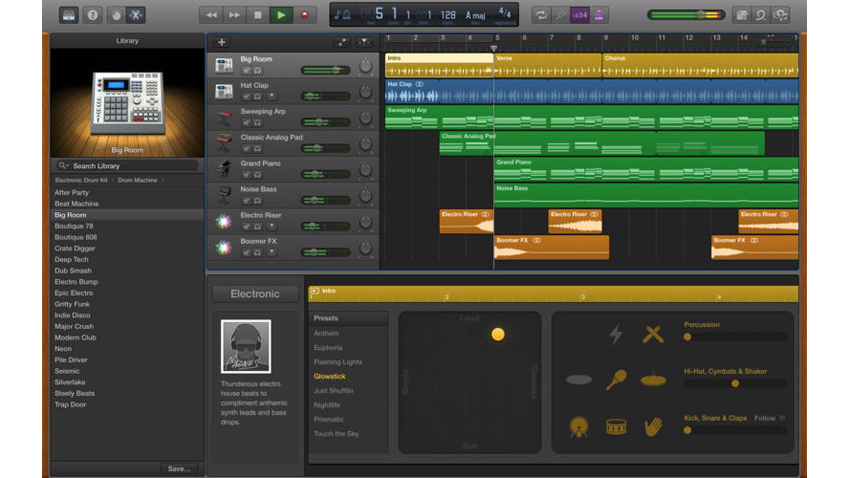- Made available with GarageBand 10.2, Drummer Loops are essentially Drummer performances captured as Apple Loops and stored in the loop library. The advantage is that you can flick through the parts with your project running and only drag in the ones you like, after which they can be edited in the Drummer Editor, just like regular Drummer regions.
- I bought my first used iMac (21,5 mid-2010) just to be used with GarageBand in small home studio. IMac with same specs worked well enough at my friends home studio. I freshly installed High Sierra 10.13.6. It was a very big disappointment to notice that it’s not possible to install GarageBand to this old version (requires.

This effectively turns GarageBand into a groovebox. You can record your own loops, or import others through the Files app. You can even import DRM-free music from the Music app. (No, it doesn’t work with Apple Music.) Record and Process Your Own Sounds. Guitarists can use GarageBand as a virtual amplifier and effect processor.
How to export Garageband files so that they work in other Digital Audio Workstations
Posted: Feb 22, 2016 12:02;
Last Modified: Feb 22, 2016 12:02
Garageband is a Digital Audio Workstation for MacIntosh. It is easy to use and comes with lots of loops and sounds you can use in creating music.
Garageband is only available for Mac, however, and if you plan to collaborate with others, then you need to find some way of getting your tracks out of Garageband in a way that will allow other systems to use the files. The best file format for doing this is .wav/.aiff (which are the same thing). Every DAW worth the name should be able to import and export this file type.
This is not something you can do with Share/Export: while it is possible to export a Garageband project as a .aiff file using share with the “Compress” box unchecked, this exports the entire project as a single file—i.e. without maintaining the individual tracks. That means your collaborators cannot edit or modify your work.

One option is to simply access the files directly: if you open up a Garageband project, there is a folder called “Media” that contains .aiff files of individual audio tracks. As far as I can tell, these merge together the state of a track, meaning that if you have lots of cuts and copies in a track, the .aiff file merges them and stores them as a single file for each track.

However, these .aiff files do not seem to have loops included (i.e. 24me para mac. things you didn’t record but added digitally). I’m also not sure what happens if you start a track late: i.e. Mario multiverse download link pc. I’m not sure if the file adds blank time before a record starts if you drop a sound into a track after it begins (though I think it actually does). Staad pro v8i bridge design tutorial. If it doesn’t, then the tracks will get out of sink.
I found, however, a great way of exporting individual tracks including loops and even the sound of MIDI tracks in this blog: http://www.delora.com/tips_and_trends/export_garageband/export_garageband.html

In short:
- Show the tracklocks. Track > Show Track Lock (GB 11) or Track > Track Header > Show Track Lock (GB10)
- In the GB interface click on the little lock icon for every track you want to export
- Press play: GB will now output a .aiff track for every locked track in your project.
These files are stored in a directory within your Garage Band Project known as Media/Freeze Files.nosync. You can share them with others in various ways:
- Send your collaborator the GB project (it will now be very big, so you’ll want to compress it).
- Extract and send only the Freeze Files:
- Using Navigator, find the GarageBand project, then Control Click on it and select “Show Package Contents”
- Copy either the folder “Freeze Files.nosync” or click on “Freeze Files.nosync” and copy all the .aiff files you find in it.
- Paste the files somewhere else and make an archive of them.
- Send the archive.